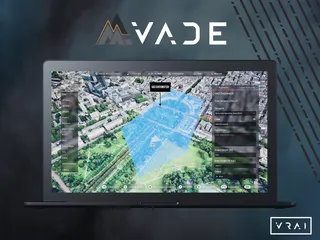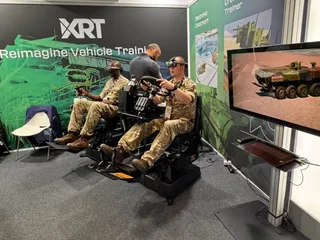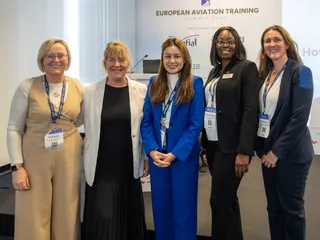Strengthening Marine Terminal and Port Operations Workforce Training and Safety
Contact Our Team
For more information about how Halldale can add value to your marketing and promotional campaigns or to discuss event exhibitor and sponsorship opportunities, contact our team to find out more
The Americas -
holly.foster@halldale.com
Rest of World -
jeremy@halldale.com

The US Centers for Disease Control and Prevention’s NIOSH (National Institute for Occupational Safety and Health) posting of 16 February 2024 on Marine Terminals and Port Operations grabbed the author’s attention. The document noted in part, “Workers in marine terminals and port operations have higher fatality, injury, and illness rates than other workers in the United States due to the variety of extreme exposures and dangerous work environments that marine terminals and port operations pose.”
The report’s findings are the underpinning for this article – another in a series of brief reviews of how simulation and training are enhancing workforce learning and safety in the broad commercial maritime community.
While the NIOSH study was US-focused, we’ll learn from two widely-recognized subject matter experts, the broader, global industry is increasingly interested in using S&T to enhance workforces in terminals and ports. Of added relevance, the author gained insights from the two SMEs fresh from their attendance at the recent TOC Europe 25 conference in Rotterdam.
Training for Remote Control Ops, AI and More
A major take-away from this and other articles in this series is digital twin, high-fidelity simulators and maturing learning enablers, including AI, are not the exclusive purview of training enterprises in the adjacent military and civil aviation communities. Similar to other high-risk industries, the broad commercial maritime industry is making measured, deliberate investments with quantifiable ROIs to strengthen their workforces’ training continuum.
During a discussion this 24 June with Brad Ball, Vice President of Sales & Marketing at GlobalSim, the executive initially noted he has attended 10 of the most recent TOC port and cargo community events on the continent and first called attention to the incremental, focused pace of change in the broad industry.
In terms of technology, AI was at the top of Ball’s list that was generated, in part, from the outcomes of the conference panel he supported. Likening the current stage of AI to his first awareness of the internet in 1995, Ball recalled it took four or five years for him to “fully digest the world of www.” – when he made his first on-line purchase. Fast forward to 2025. “For a lot of industries, that is where we are at with AI. For training and simulation, we are using it. We’re dabbling in AI. Our coders are using it a lot and we’re experimenting. And while we don’t know exactly what it will look like in a few years, we know it is happening. But it is still very early on.”
CM Labs is also taking well-designed steps to mature and develop AI as a training enabler. Devon van de Kletersteeg, a Product Growth Manager at the company pointed out CM Labs is putting a lot of care and consideration into the developments the firm makes to its solutions, as well as how those changes meaningfully and positively impact instructors, trainees and ports as a whole. “For us, it’s about setting the standard for excellence and foresight in simulation training, rather than just chasing trends,” he noted and significantly recalled that earlier this year, CM Labs acquired AI Redefined (AIR), a Montreal-based company renowned for its work in real-time, human-AI collaboration. “This move reflects our commitment to developing industry-leading training solutions that support and empower instructors in providing safe, efficient, and high-quality training. Originally designed for high-stakes sectors like aerospace and defense, this technology aligns with our mission to create responsive, real-time learning environments that evolve with the learner.”
Beyond AI, Ball pointed out the “slow moving trend to automation in many different ports” – which, in turn, has implications for workforce training. He noted that while modern ports in Asia, Europe and the US have started to adopt automation, it is not “full” automation – it is usually segmented, initially going to a remote-control operator. “If you fast forward 30-40 years from now, we’ll have ports that are fully automated but it’s going to be a long time getting there.” GlobalSim’s portfolio, includes in part, training devices to support semi-automated projects in some port complexes.
Similarly, the CM Labs executive recalled his team saw a lot of interest at TOC in training solutions designed to help equipment operators prepare for the transition to remote operations. “We’re seeing ports that want solutions to help them train their workforce ahead of equipment deployment, to make that transition as smooth as possible. For many, the clear answer is simulation training,” he emphasized.CM Labs also observed the customers at TOC showed strong interest in better management of training programs and student performance. Van de Kletersteeg pointed out his company’s Intellia training management system, which connects and monitors multiple simulators from one location, greatly impressed conference attendees. “Having this capability is vital for the ports market, where multi-site collaboration and standardized training is needed. A centralized system offers objective performance tracking, improves overall accountability and transparency, enhances communication, and helps to scale training programs.”
Familiar ROIs
Ball called attention to the returns on investment being realized by GlobalSim’s customers. Of note, the ROIs present a common thread on the outcomes that training enterprises in adjacent high-risk communities, including the military and civil aviation, are realizing from investments in their sector-specific S&T systems. The executive emphasized GlobalSim training systems “are saving a lot of money on training costs and they prevent accidents. What simulators do is take a novice operator and turn he or she into a very capable novice – advancing a level 1- or so novice into a level 4- or 5 individual.” From that point of the learning continuum, the aspiring operator advances to developing and reinforcing skill sets on actual equipment. Ball reiterated that many sector accidents occur when novice operators train from day 1 on actual equipment, making this “hands on” instructional strategy a “very dangerous time.”
GlobalSim also reports that port operators around the globe equipped with the company’s training devices are revealing, on average, their crane operator training program enabled with simulators are being compressed from three-to-four months to three-to-four-weeks.
Doing Business in this S&T Market
While Ball noted there some “bumps” in the global shipping industry market with tariffs and other forces at play, GlobalSim reports a constant demand signal for its training devices from prospective and current customers. The executive also provided several important data points on this S&T market, adding the average acquisition cycle (through contract signing) for a simulator to support port operator training may be a year or so, and that “more than one-half of our clients have more than one of our systems because they provide a really good ROI.”
In terms of a business model, GlobalSim generally follows an “in-house” development capability for its training systems. “We have the ‘Apple philosophy’ – where we have the software and hardware designers in house to get what we consider to be a more premium product,” Ball explained but added the company does work with crane manufacturer OEMs to obtain chairs, controls and other content to bolster the training system fidelity. “We will build a simulator with controls, from the Italian company Brada or JR Merritt Controls – so they will exactly replicate the real equipment.”
CM Labs is also on board with an in-house business model, when feasible. Van de Kletersteeg explained all of the company’s content is developed on its “industry-leading Vortex™ platform, which was built in-house using decades of award-winning research. Because we build all of our content ourselves, we’re able to fully tailor and customize our solutions to our clients’ needs.” Of no surprise, for the simulators that are a part of CM Labs’ training system, the company also works with leading OEM suppliers to source its controls. “This ensures that our clients benefit from a training solution that more closely mirrors real equipment operation, thereby aiding in the development of ‘muscle memory,’” the executive emphasized.
Other Trends and Looking Downstream
“Something we do very, very well is customizations,” Global Sims’ Ball said and recalled that three or four years ago, customizations were quite rare in this sector. “Now we have the tools and ability to create detailed ‘arena customizations’ where we can go in and recreate an entire port – down to the lane markings, the signage, the shapes of the terminal and quay – we can literally create a digital twin of the entire port – much, much easier than we could three or four years ago. The customizations continue to improve and become easier and much less expensive than they were.”
In the next 12 months, GlobalSim will unveil a new release, a second-generation hand-eye-foot-coordination testing tool. The module will have matured through the last five years of development to test hand-eye-foot coordination of operators before their initial entry into a simulator cab. “This is a very important tool to have. Some people are simply not good at coordinating their hands and eyes and maybe being a crane or other equipment operator is not the ideal job for them – it helps ‘weed them out’ early on in the hiring process,” Ball said. Companion testing modules, including tests for color blindness, hand-eye-audio coordination and workforce capabilities, are also forthcoming from GlobalSim.
Back at CM Labs, Van de Kletersteeg added that recently his company has seen purchases of more high-fidelity training systems. “This includes the recent deployment of our larger MasterCab, which is a cabin-style simulator that offers a more immersive and realistic training experience,” the executive pointed out and continued, “At the same time, we’re also seeing that the needs of the market continue to evolve, with more and more clients wanting solutions for remote operation training. This has led us to explore new solutions that ensure we can continue to meet evolving training needs across a wider spectrum of equipment and operational scenarios.”
At this year’s TOC, CM Labs launched a new remote operating station (ROS), designed in collaboration with industry-leading controls manufacturer Spohn + Burkhardt. The ROS desk allows operators to have a dedicated training solution on professional hardware, which is something that was not readily available, according to the company. Van de Kletersteeg added CM Labs also recently launched the Intellia ROS RTG Training Pack, which runs on the ROS desk and fully integrates into the Intellia Intelligent Training System. It features exercises that progress in difficulty from beginner to advanced. “Throughout the past year, we have also been making significant investments in our Intellia training management system as well as features to help students train more effectively. All of our port products integrate this training management system, offering high-quality reporting tools that assist instructors in monitoring and evaluating students during their training,” the executive concluded.
On Our Watch List
This glimpse of training activities in the inshore port environment is part of a larger story on how S&T is enabling workforce members to learn more efficiently, effectively and safer through their careers. We look forward to receiving updates on your products, programs and activities that are helping prepare these and other community members, on ships and elsewhere, to safely operate -anytime, anywhere. I look forward to receiving your inputs at marty.kauchak@halldale.com.


